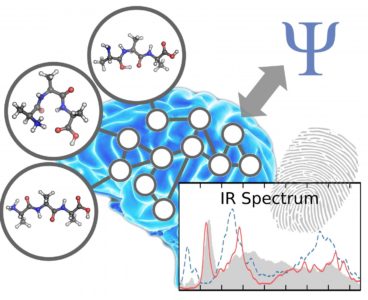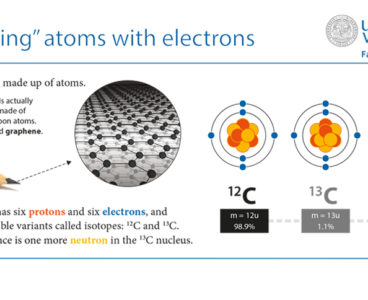A novel material that consists of a single sheet of carbon atoms could lead to new designs for optical quantum computers. Physicists from the University of Vienna and the Institute of Photonic Sciences in Barcelona have shown that tailored graphene structures enable single photons to interact with each other. The proposed new architecture for quantum…
Rapid Destruction of Earth-Like Atmospheres by Young Stars
Faster Than Allowed by Quantum Computing?
For A Longer Battery Life: Pushing Lithium Ion Batteries to the Next Performance Level
Manipulating Single Atoms with an Electron Beam
All matter is composed of atoms, which are too small to see without powerful modern instruments including electron microscopes. The same electrons that form images of atomic structures can also be used to move atoms in materials. This technique of single-atom manipulation, pioneered by University of Vienna researchers, is now able to achieve nearly perfect…
High-Performance Magnetic Sensors Developed
University of Vienna Many modern technological applications are based on magnetic forces, e.g. to move components in electric vehicles or to store data on hard disks. Yet magnetic fields are also used as sensors to detect other magnetic fields. The total market for magnetic field sensors based on semiconductor technology currently amounts to $1.67 million…
Can the Causal Order Between Events Change in Quantum Mechanics?
Researchers at the University of Vienna and the Austrian Academy of Sciences develop a new theoretical framework to describe how causal structures in quantum mechanics transform. They analyse under which conditions quantum mechanics allows the causal structure of the world to become “fuzzy”. In this case, a fixed order of events is not possible. The…
Fingerprints of Quantum Entanglement
The ultimate goal of quantum information science is to develop a quantum computer, a fully-fledged controllable device which makes use of the quantum states of subatomic particles to store information. As with all quantum technologies, quantum computing is based on a peculiar feature of quantum mechanics, quantum entanglement. The basic units of quantum information, the…
A Nano-Watch with Steady Hands
Tick … tock… Very regular clocks are essential in our everyday lives. They enable us to navigate, from the marine chronometers used to determine longitude, to GPS. Stable clocks power the Internet, defining the speed with which information can be sent and received. If your timepiece is very precise, it is easy to detect even…
Artificial Intelligence for Obtaining Chemical Fingerprints
Drastic advances in research of artificial intelligence have led to a wide range of fascinating developments in this area over the last decade. Autonomously driven cars, but also everyday applications such as search engines and spam filters illustrate the versatility of methods from the field of artificial intelligence. Infrared spectroscopy is one of the most…
What Flowers Looked Like 100 Million Years Ago
Flowering plants with are by far the most diverse group of plants on Earth. Flowering plants arose only about 140 million years ago, but since then have diversified spectacularly. No one knows exactly how this happened, the origin and early evolution of them remains one of the biggest enigmas in biology. A new study in Nature…
Magnetic Quantum Objects in a “Nano Egg-Box”
Chemically Tailored Graphene Used in Semiconductor Applications
Graphene is considered to be one of the most promising new materials. However, the systematic insertion of chemically bound atoms and molecules to control its properties is still a major challenge. Now, for the first time, scientists of the Friedrich-Alexander-Universität Erlangen-Nürnberg, the University of Vienna, the Freie Universität Berlin, and the University Yachay Tech in…
New Records Set Up With ‘Screws of Light’
Twisted light Time and again, properties of the light surprise the research world. For example, light can be brought into a corkscrew-like form in order to produce so-called “screws of light”, as Anton Zeilinger, quantum physicist at the University of Vienna, describes. The amazing fact is that one can in principle impose any number of…
Birth of Massive Stars Accompanied by Strong Luminosity Bursts
The birth of massive stars is still a mystery to us, because these stars are embedded in an extremely dense medium of gas and dust, says Rolf Kuiper, the leader of the Emmy Noether Research Group for Massive Star Formation, funded by the German Research Foundation (DFG). “This opaque envelope makes it difficult to directly…
‘Weighing’ Atoms with Electrons
The different elements found in nature each have their distinct isotopes. For carbon, there are 99 atoms of the lighter stable carbon isotope 12C for each 13C atom, which has one more neutron in its nucleus. Apart from this natural variation, materials can be grown from isotope-enriched chemicals. This allows scientists to study how the…









